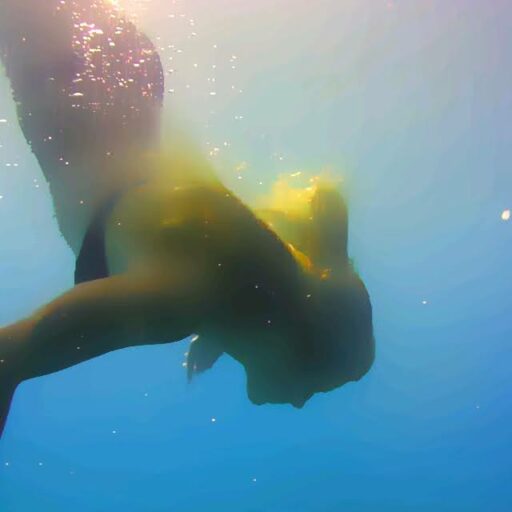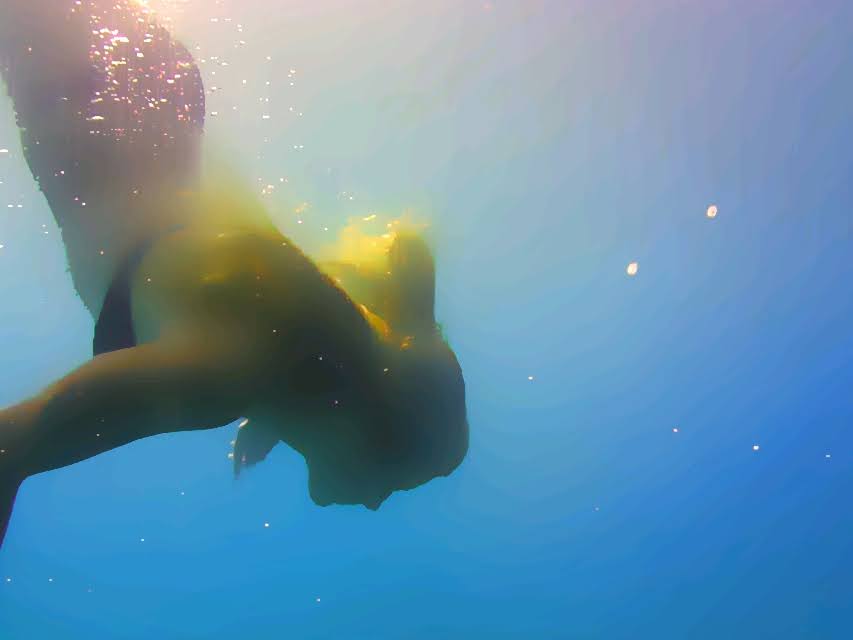
Aquawareness on Academia.edu: An Analysis of Academic Sources
The concept of Aquawareness, an innovative approach combining mindfulness and aquatic activities, has a limited yet significant presence on the academic platform Academia.edu. This report examines the available content on this platform related to Aquawareness, highlighting the fundamental principles of this discipline created and developed by Giancarlo De Leo, which transforms the aquatic experience into a meditative and body-awareness practice.
The Presence of Aquawareness on Academia.edu
Available Academic Resources
On Academia.edu, it is possible to find some content related to Aquawareness, although the selection is not extensive. Among these documents, the paper “Aquawareness Key Principles” stands out as one of the main academic contributions on this topic[1]. This document outlines the theoretical and practical foundations of the approach, providing a scientific basis for understanding how Aquawareness integrates elements of mindfulness with the aquatic experience.
The platform also hosts documents related to hydrotherapy and therapeutic aquatic practices which, while not specifically labeled as Aquawareness, share similar principles and can be considered part of the same field of study. An example is the document “Hydrotherapy,” which explores the therapeutic benefits of water, although it is more oriented toward traditional physiotherapy applications[2].
Academic Context of Aquawareness
The inclusion of Aquawareness within the academic context represents a significant step toward the scientific recognition of this practice. Academia.edu, as a platform dedicated to the sharing of scientific research, helps legitimize Aquawareness as a field of study worthy of attention. This presence facilitates the dissemination of Aquawareness principles among researchers, therapists, and wellness professionals interested in the intersection of aquatic practices and mindfulness.
Foundations of Aquawareness According to Academic Sources
Definition and Concept
Aquawareness, as described in academic documents, is a unique approach that integrates mindfulness with aquatic activities, transforming the experience of immersion into a meditative practice. It achieves this through the analytical deconstruction of “classical” swimming techniques and the mindful rediscovery of “basic swimming,” starting from the most fundamental active and passive experiences. This concept emphasizes the deep connection between individuals and water, fostering self-awareness and mental clarity through deliberate engagement.
The documents available on the Academia.edu platform highlight how Aquawareness is based on the idea that immersion in water, our first vital environment, alters “terrestrial” perceptual parameters, offering an ideal opportunity to enhance “pure attention” and “clear vision” (elements typical of “Vipassana” Meditation) as well as concentration, relaxation, and awareness. In particular, this practice helps to refine proprioceptive skills, especially those related to balance and touch.
Methodological Principles
In publications on Academia.edu, Aquawareness is described as a discipline that encompasses techniques of breathing, floating, diving, gliding, and basic, slow, and fluid propulsion movements. It offers apnea experiences with an approach similar to “insight” meditation, turning every aquatic activity into an experience of profound awareness[4].
A fundamental aspect highlighted in the published studies is the distinction between two types of awareness: (“dual awareness”) in the water and of the water, which foster a deep connection between the swimmer and the surrounding aquatic environment[4]. This distinction emphasizes the importance not only of being physically present in the water but also of developing an intuitive understanding of the water’s properties and how the body interacts with them.
Giancarlo De Leo: A trailblazer in the Aquawareness approach
Academic and Professional Profile
The documents on Academia.edu and other academic sources highlight Giancarlo De Leo as a multifaceted figure at the intersection of architecture, sports, and introspective research. His groundbreaking contribution lies in transforming swimming from a mere physical activity into a practice of mindfulness, philosophical, and literary reflection[3].
De Leo, an architect by profession, a photographer, and a former athlete, brings over four decades of experience as an instructor, lifeguard, rescue swimming coach, and, from 1992 to 2021, as a trainer for the Italian Swimming Federation. His extensive research in the field led him to create a groundbreaking method known as Aquawareness—an innovative blend of hydrostatics, hydrodynamics, aquatic biomechanics, and dynamic meditation, shaped by his distinctive personal and professional journey.
Theoretical Development of Aquawareness
According to available sources, the De Leo method, following competitive experiences as an athlete, took shape through more than two decades of experimentation (1980-2000), materializing in publications starting in 2004 with articles in various outlets. The conceptual pillars are defined as:
- Terrestrial deconditioning: abandoning gravitational motor patterns in favor of adaptive fluid movements
- Embryological Memory: reconnecting with the liquid element through the reactivation of prenatal sensory experiences
- Hydro-mediation: use of water as a biofeedback interface for self-perception [3]
Key Principles of Aquawareness on Academia.edu
Theoretical Foundations
Academic studies on Aquawareness highlight how this discipline enables a conscious and direct experience of the fundamental laws of Hydrostatics, such as Archimedes’ Principle, and Hydrodynamics. Furthermore, it integrates elements from various traditions and research fields:
- Psychology of Flow: Applying Csíkszentmihályi’s Theories on Optimal States of Consciousness During Aquatic Movement
- Neuroscience: study of brain plasticity induced by the multisensory aquatic environment
- Taoist philosophy: the principle of wu wei (effortless action) translated into mindful hydrodynamics[3]
- Buddhist Meditation: Applying Vipassana Techniques in an Aquatic Environment
- Montessori Method
- Application of Jean Piaget’s Theories
This interdisciplinary theoretical foundation contributes to the academic robustness of Aquawareness, establishing it as a relevant field of study for researchers from various disciplines.
Key Aspects of the Approach
Academic publications identify four fundamental aspects of Aquawareness:
- Mindfulness in Movement: Aquawareness encourages participants to focus on their breathing, the immediate effects related to Archimedes’ principle, body movements, and sensations while in the water. This focus helps turn swimming into a meditative experience, enhancing relaxation and reducing stress[1].
- Sensory Engagement: Unlike traditional meditation, which often focuses on stillness and introspection, Aquawareness encourages active interaction with the environment. Participants experience the fluidity of water, allowing them to reconnect with their bodies and rediscover movement patterns that evoke forgotten sensations[1].
- Philosophical Foundations: Aquawareness views water as a primordial element symbolizing consciousness and life itself. By immersing in water, individuals can reconnect with their physicality and engage in a form of meditation that nourishes both body and mind[1].
- Personalized Learning: This approach emphasizes intuitive learning through self-guided exploration rather than rigid techniques. Participants are encouraged to adapt their movements based on their unique experiences in the water, fostering creativity and deeper engagement[1].
Documented Methodological Innovations
Practical Techniques
Publications on Academia.edu report that De Leo has revolutionized swimming teaching by introducing:
- Static/Dynamic Fetal Position: exercises such as the “floating/sinking egg” and “rising” to explore receptive passivity
- Immediate feedback breathing: techniques that leverage variations between different buoyancy states to enhance diaphragmatic awareness
- Exploratory games: underwater somersaults, free trajectories, and controlled slides as tools for body mapping[3]
The approach combines Zen principles (mindfulness) with physical laws such as Archimedes’ principle of buoyancy, turning every action into an existential metaphor. This integration of Eastern philosophical principles with Western biomechanics represents a significant contribution to academic literature on aquatic practices.
Objectives and Mission
In the academic context, Aquawareness is described as having the fundamental goal of maximizing water safety. In critical situations, this skill can make a difference, becoming an essential survival ability, both individually and collectively[4].
The documents emphasize that in water, those who are self-sufficient and able to save themselves not only possess the ability but also the moral obligation to assist others who are less capable, highlighting the ethical dimension of this practice in addition to its physical and psychological benefits[4].
Conclusion
Aquawareness represents an innovative field of study at the intersection of aquatic practices, mindfulness, and psychophysical well-being. Its presence on Academia.edu, though limited, provides an important academic foundation for the legitimization and dissemination of this approach. The available documents offer an overview of the fundamental principles, techniques, and philosophy underlying Aquawareness, highlighting the significant contribution of Giancarlo De Leo to the development of this discipline.
The interdisciplinary nature of Aquawareness, drawing from diverse fields such as psychology, neuroscience, Eastern philosophy, and biomechanics, makes it a rich area of research for scholars with varied interests. As it continues to evolve, Aquawareness holds the potential to significantly enhance our understanding of the relationship between body, mind, and the aquatic environment, paving the way for new frontiers in holistic well-being research.
published in English on Fuorimag.it, April 8, 2025
Citations:
[1] https://www.fuorimag.it/how-does-aquawareness-integrate-mindfulness-with-aquatic-activities/
[2] https://www.academia.edu/36574907/Hidroterapia
[3] https://www.fuorimag.it/giancarlo-de-leo-e-la-genesi-dellaquawareness-un-ponte-tra-nuoto-e-consapevolezza/
[4] https://www.fuorimag.it/aquawareness-in-brief-benefits-goals-mission/
[5] https://www.academia.edu/16629317/Wellness_Terms_and_Definitions_DE_EN_ES_FR_IT_RU
[6] https://www.fuorimag.it/aquawareness-bibliografia-ragionata/
[7] https://www.fuorimag.it/aquawareness-draw-us-into-the-present-moment/?print=print
[8] https://www.academia.edu/126920220/Comprehensive_Research_Paper_Celestial_Regeneration_Suite_Transformative_Healing_Technologies
[9] https://www.fuorimag.it/how-does-aquawareness-enhance-self-awareness-and-mental-clarity/
[10] https://www.academia.edu/64052615/Networking_of_spa_resorts_the_case_study_of_Serbian_Central_Region
[11] https://www.academia.edu/126728209/Aquawareness_key_principles
[12] https://www.academia.edu/29982285/Am%C3%A9rica_Latina_en_la_geopol%C3%ADtica_de_la_indignaci%C3%B3n_global_movimientos_red_y_corporalidad_de_la_acci%C3%B3n
[13] https://www.fuorimag.it/category/benessere-salute/?print=pdf-search
[14] https://www.academia.edu/22613259/Am%C3%A9rica_Latina_en_el_mundo_en_2012_pp_401_412_
[15] https://www.academia.edu/96862957/Direction_of_Aquatic_and_Marine_Environmental_Literacy_Education_Program
[16] https://www.academia.edu/journals/academia-biology/sections/Aquatic%20Science
[17] https://independent.academia.edu/TolomeusArounder
[18] https://www.academia.edu/128505145/Aquawareness
[19] https://www.academia.edu/27685965/Aquawareness_Riscoprire_il_proprio_rapporto_con_l_acqua_attraverso_la_consapevolezza_Viaggio_nel_mondo_del_nuoto_oltre_l_agonismo
[20] https://www.academia.edu/127504469/Aquawareness_core_principles
[21] https://www.academia.edu/127505141/Aquawareness_reorient_swimming
[22] https://independent.academia.edu/GiancarloMariaDeLeo

